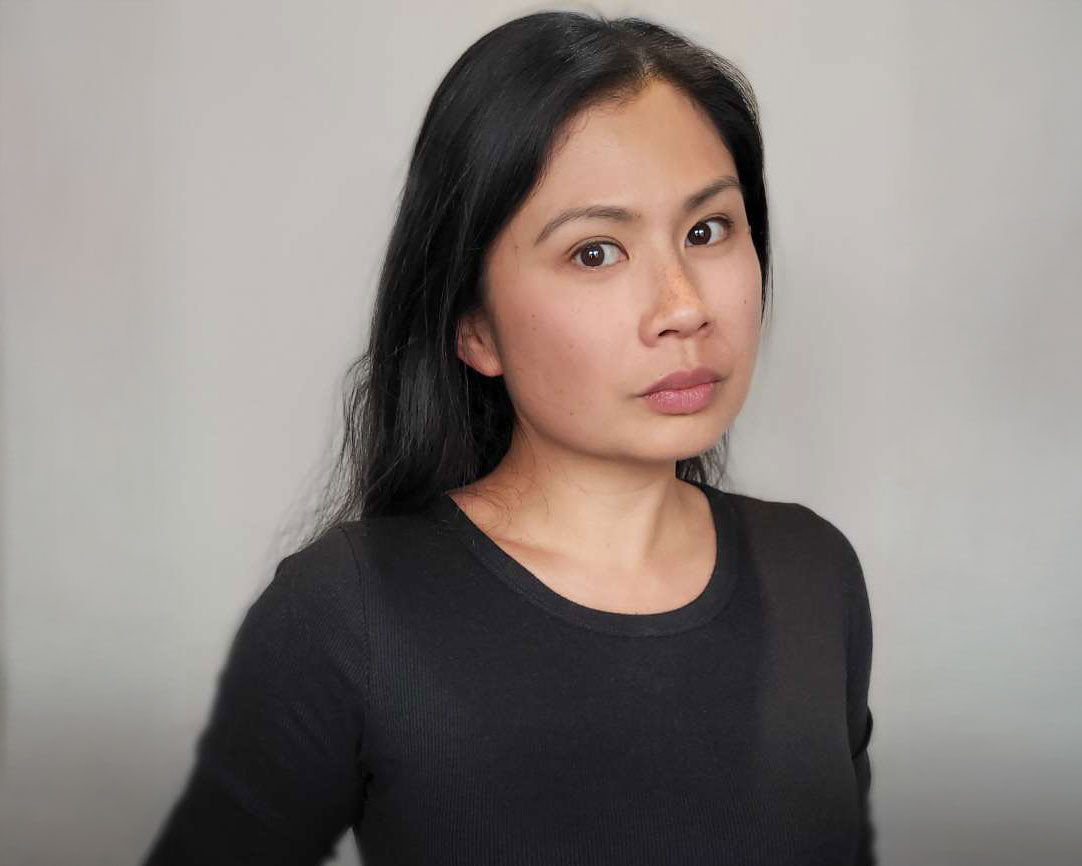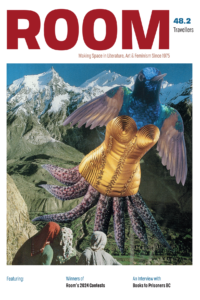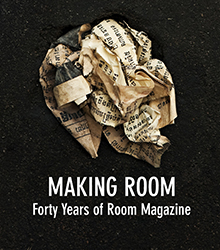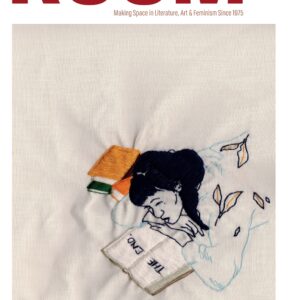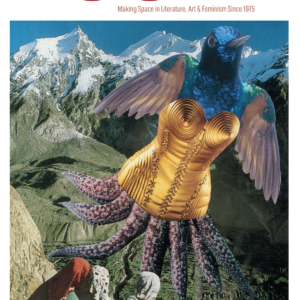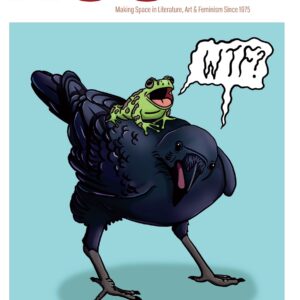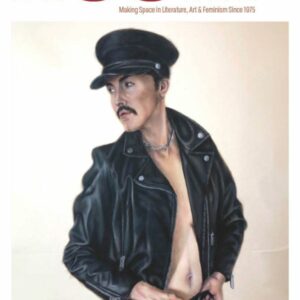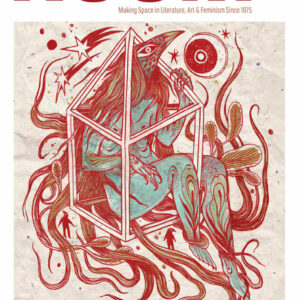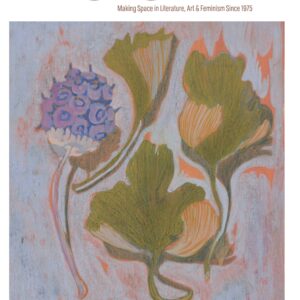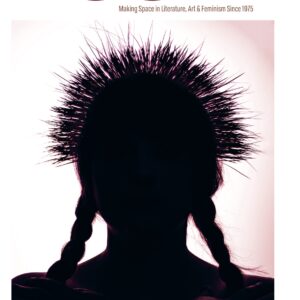What stories are we told about history, what do we hold as truth, and how do they live in the body?
For our 2025 Asian Heritage Month feature, we’re revisiting Stephanie R. Lim’s “We Have Carried Our Longing,” first published in Room 46.1 Around the Table: Asian Voices.
We Have Carried Our Longing
by Stephanie R. Lim
“Don’t eat so close to the bone,” our mother would say. “It will make you itchy.”
But I did eat close to the bone. I stripped every last trace of flesh, scraping my teeth across the snappy cartilaginous shell, slurping golden drops of pulpy juice, quenching the hunger and thirst of a steamy summer day.
–
“You can always afford to eat the food you love,” she would tell us. “You just have to be willing to look for sales, clip coupons, take a bus anywhere you need to go. You can find what you’re looking for. You just have to be willing to spend the time.”
This was a person who had somehow found her way to the sour-salty-bitter-sweet flavours of home in the suburban jungles of 1970s Montreal. She had escaped an authoritarian reign of terror, finding herself in a fashionable but completely inadequate winter coat, with a baby to feed, in a city she didn’t know.
The woman, the coat, and the baby, all dropped into the turbulent wake of the October Crisis: a separatist movement rooted in a crisis of language, identity, and power. Martial law and déjà vu. A reminder of the always-potential synergy between violence and democracy.
Every immigrant in the apartment complex was living out the knowledge that nowhere is safe, not even the places we call home. Meanwhile, Mom was seeking out cheap broccoli for the sinigang because, when no place is safe, maybe all we can do is reconstruct the memory of a place we have never actually been. We use the flavours of the place where we are, to conjure a dream of being safe, home, at last.
–
Ode to America, and its little brown brothers: Success is assimilation, model minority, capitalistic success on capitalism’s terms. Success means trading your language for acceptance, severing your children from your people’s collective memory—an archive that comes to life in the words of its language, spoken, read, thought, dreamed.
So serve your children dinuguan and adobo. Sour your ulam with Heinz 5% Acidity White Vinegar, since that is what vinegar is in this strange country. Raise your babies on nilaga (without plantains) and tinola (without malunggay). Assemble for them the idea that we are safe and sound and home, served with a plate of hot rice.
–
Here is a logic: Buy your food in season when it’s affordable, preserve it for lean times, and you’ll never go hungry. Food security is achievable, if only people will learn the skills; if they will empower themselves to stretch and stretch and stretch those grocery dollars.
Here is a cool twist on democracy: “Vote with your dollar! Vote with your fork!”
Here is weaponized nostalgia: Make grape jelly and can wild salmon and believe these activities will save you from a future that capitalism has already written.
–
My latest love interest cuts flesh, with razor-sharp precision, from the bone.
Painstakingly plucking out every hair-thin bone, packing chunks into glass jars. It is an offer of practised workmanship; a heartfelt gift of time and skill, and a gesture of love to feed us through the cold months to come. Jars bursting with marbled pink salmon, stacked carefully on shelves, a gloriously fatty layer of precious orange oil floating to the top of each one. He cuts, and he packs, and we process. And he composts the bones.
–
The story goes something like this: Lola grew up on a farm, and she grew up hungry. You see, an occupying army aims its insatiable hungers at the occupied: hungers for food, shelter, women, girls.
Lola was one of . . . how many siblings? Eleven, I think. A few years ago, she could name every one of them, recall their nicknames, their spouses, their years of birth. Last month, she asked, “Nasaan ako bago ako nandito?”
In those hungry years of occupation and war, in the midst of unrelenting, ever-present danger, the family might gather around a single pot of rice and one small can of sardines. This was their supper. My great-grandfather would remove the slivery bones from these tiny fish, gently placing them on my grandmother’s plate. She was the baby, the youngest, just growing. She needed whatever nourishment could be wrung from the circumstances. Grow as strong as you can from what we can give you, little one. Eat these bones, these bones are for you.
–
Scientists observe that the forests of the Pacific Coast grow tall and strong from the nitrogen-rich bodies of salmon that swim up the rivers and die. Obviously, scientists were not the first to know this, but our stories contend with centuries of cultural genocide and knowledge erasure. You understand.
The salmon, who return to the places they were born, swim without stopping for thousands of kilometres. They do not eat. They swim upstream, even up waterfalls. The ones who overcome the bears and the toxins and the endless traps of the Anthropocene—arrive and spawn, and die. Concluded. Tapos. While far up above, the highest leaves of the towering cedars grow lush and green, drawing life from the bodies below. The leaves provide shade, the shade shields the river, and life gives to life in an intricate reciprocity that (again) was known long before Science ever looked up from the Dark Ages and noticed anything.
How do they know they where came from, and how do they know the way back? Scientific inquiry, for its part, is disinclined to say the fish have memory. So what calls them back from wherever in the world they have travelled—from the ocean, to the estuary, to the river, to the shelter of a place that might be called home?
The way is in their genes, the poets might say. Built into their DNA, even scientists agree. They find their way, generation after generation, as they have done since before human memory began. Or, they would—if we weren’t relentlessly enacting the future that colonialism has already written. You see, the forces of occupation have a rapacious hunger for all things.
As they say: preserve your food in its season. Never go hungry again.
–
Pluck, pluck, pluck. Until he said the words, I had never heard the English term “pin bone.”
Even if you’ve fed your babies palabok and puto and atsara in place of Tagalog and Ilocano and Visayan, there will be times when English cannot say the things we need to say.
I could not have told you the Tagalog words for heart, love, dream, home, safe. But I always could have told you to be careful of tinik, those sneaky little fish bones that catch in your throat if you aren’t paying attention. Nearly invisible as they are, they can hurt you. Or, at least, they can make you itchy.
“Be careful of the tinik,” we grew up hearing, and so we grew up saying: “Don’t get one caught in your throat.”
–
Tagalog, you might or might not know, is the name of both the language and the people. It is a contraction of Taga-Ilog, which means (more or less), People of the River. To outsiders, Filipinos are just Filipinos (and maybe Filipinas, and maybe even, controversially, Filipinx). The country itself is named after some European-who-gives-a-shit-monarch; it is seven thousand islands and more than a hundred languages (the phoneme “ph” doesn’t exist in any of them). It is also home to a social and cultural hierarchy where Tagalog people have the greatest proximity to the capital, the greatest access to political power, and (in diaspora) the most accessible language-learning opportunities. Supremacy has its layers. That is to say, to claim a living history of oppression is a complicated matter.
–
The woman, the coat, and the baby. Proclamation No. 1081. Ferdinand Marcos and his three-decade regime—a reign of violence buttressed from the shadows by the last in a long chain of colonial rulers. USA!
The War Measures Act. The contradictions of freedom.
But now I am being obscure. Permit me to pause and surface a subtext from the footnotes of history—a few specificities from a sea of post-colonial ironies.
Let’s suppose the nuns at your school brought in newspaper evidence of bloodshed and horror, just across the water in Vietnam. Let’s say they brandished these headlines, these photos of war, and called the death and destruction a sign of the coming apocalypse. Reminders of the importance of prayer and penance.
Let’s suppose your education was designed by paternalistically benevolent foreigners whose educational objectives included pacification, English fluency, assimilation, USA! etc. The road had already been paved by three centuries in the shadow of Spanish cathedrals.
It would be difficult, under these circumstances, to connect the realities of local life under Martial Law with the grainy images of war in Vietnam. But the reach of anti-communist foreign policy was long and sinuous, and the term “Cold War” is a sweeping discursive erasure of those who suffered in its violence. A girl on fire, screaming her fear and pain down a village road. Agent Orange. Cold.
So what if Marcos was an authoritarian despot with his hands in the state coffers and a growing record of human rights abuses? He was vehemently anti-communist, and therefore, a most useful person as long as he was in power. This political meddling was among many similar investments in America’s bid to contain communism; the kind of manoeuvring that brought disastrous, lethal, consequences for ordinary people all the way up to full-blown economic and political systems.
I did not grow up speaking Tagalog. But from an early age I knew that Marcos was synonymous with profound political unfreedom, unchecked corruption, grift and cronyism, entrenched and ever-more-abject poverty. We were told about these things, but we were still children. Our adults protected us from knowing details. Details like the bodies. Thousands of the government’s torture victims, journalists, educators, “communists,” murdered and mutilated, dumped in obvious places for the public to “salvage.” Grisly and terrifying warnings to all who might oppose the regime: this could be you.
The people, the church, and even the military eventually rose up and overthrew him. We gathered around our little tv and watched the revolution unfold, our adults incredulous, safe in our corner of the settler colonial empire. The people overthrew him, but not before thousands and thousands of others had escaped to everywhere in the world. Educated, uneducated. With papers, without them. They all looked over their shoulders, and held their breath, and waited.
–
An estuary is the place where the river meets the tide, where saltwater mingles with fresh. It is the push-and-pull of ocean waves, and rich nutrients carried from upstream. Not saltwater or freshwater; a unique ecosystem, something altogether different.
The estuary is the river’s wide-open mouth; a gateway for travellers returning from wherever in the world they have journeyed. It offers to swallow up those brave ones seeking to return to . . . what, or where? To the edges of collective or genetic memory. A thing, or a place, that might possibly be called home.
It is not a well-known fact that Filipino migration to Turtle Island stretches back to the 1500s, when Ferdinand and Isabella sat in their palace praising the Lord, expelling Jews and Muslims, torturing converts, and ruling the Philippines and Mexico as exotic colonial possessions. The Spanish Empire grew fat and wealthy on Indigenous blood and stolen New World silver, while Filipino sailors escaped the abuses of Spanish galleon labour. They hid and they shrimped on the shores of the (Not Actually) New World. Enough of them never went home, there’s even a commemorative plaque somewhere in Louisiana.
This is all to say that the Marcos era was hardly the first wave of emigration, nor was it the last. The current wave responds to a global appetite for English-speaking brown bodies for such distasteful work as: Growing produce, packing produce, slaughtering animals, packing meat, selling doughnuts at all hours of the night and day, caring for babies, wrangling children, and comforting disoriented seniors when they ask “Where was I . . . before I was here?”
Educated in the English-language legacy of American curriculum reform, Filipinos now find themselves on an accelerated track to being the most globally mobile, in-demand workforce—transnational labourers without any substantive guarantee of security, safety, income, or human rights.
The future that globalization has already written is Canada’s urgent need for 24-hour doughnut access. An occupying force possesses a hunger, you see. And, well, you know the rest.
–
There is a history that imperialism already wrote. It is the true story of a dictator, his cronies, his family, and a hunger for power that consumed the prosperity of a nation.
Champagne and imported wine. Perfume by the crate. Priceless fine art that comes at a price. Yachts. Palaces. Shameless. Extravagant. And, infamously, shoes.
Those shoes. Silk, rubies, diamonds, buttery beautiful leather. More shoes than anyone could wear in a lifetime. Opulence and salt rubbed into the unhealed wounds of every labourer subsisting on $2 a day, of some 70 000 political prisoners incarcerated without hope of freedom.
The Marcoses couldn’t take it all with them when Reagan flew them to Hawaii in ‘86 (of course he granted them amnesty). They stuffed their proverbial pockets with all the riches they could carry, leaving the shoes and the perfume and art behind. That’s the only reason the shoes became known to the world, documented, photographed, filmed. Evidence. Artifacts of corruption and cruel indifference. Let them eat cake. Crimes against the people.
–
Any story can be overwritten.
Any story can be made to disappear.
The dictator becomes the hero. The tortured and the disappeared and yes, even that monstrous collection of shoes—are transformed into the stuff of fairy tales. A Golden Era when the people were happy, and prosperity beamed from the mountains to the shore. We could be that happy. We could have all that again.
Here are revisions made of lies, woven so tightly they block out the light.
Here is: writing over a revolution still vivid in the living memories of millions of people, paving the road back to power, in the shadow of Spanish cathedrals, in the legacy of foreign benevolence.
Here is: leaving the past behind, and believing this will save your children from a future that corruption set in stone.
It is still being written.
Those who journeyed away look over their shoulders, dazed. They recall a place that was home, but whose memory, even of its own self, might never be safe again.
And we are their children.
–
Don’t chew so close to the bone, our mother would say.
And then we got older and educated and bratty enough to correct her. It’s not a bone, we’d say, rolling our eyes, inhaling the custardy jewel-toned perfume of “Manila” mangoes that some adult had hauled all the way from Chinatown. Stringless flesh smeared across our chins, mashed between our fingers, juice running down to our sugary elbows. Mouths wide open, swallowing ideas of places we had never been.
It’s a seed. Fruits don’t have bones.
And she would shrug.
What we never knew, what she never told us (would we have listened?) is that fruits do have bones. Of course they do. Vegetables have bones, too. But we could not have known this when we could not speak the words to understand our history.
Success is assimilation, model minority. Success is forfeiting your language and severing your children from the record of your people’s collective memory: an archive brought to life with every utterance of every word.
–
How does one narrate one’s own authenticity into existence? Is it possible without rehashing every tired cliché? Food is home, food is family, food is love. I am not the first to say these things and I won’t be the last. What is there new to say, to write, that hasn’t already been said?
Shall I say that I can salmon with all the bones in, that I open the jars and crush the salty vertebrae between my teeth—for the calcium, for that satisfying crumble, squish, squeak. Shall I say how often I ask myself if Lola could have eaten this many fish bones when she was a girl, maybe she never would have broken . . . is it both hips? One femur? One forearm? It’s hard to keep track. Osteoporosis is a hell of a disease, and I worry all the time about her falling out of bed when she wakes up at 3am and thinks she needs to hit the ground running because the bus to Baliuag is about to leave without her. It isn’t. The bus she’s chasing left years ago.
But I digress.
–
In the language of the People of the River, buto is a seed.
It is also a bone.
We have carried our longing for the river, the seeds, and the bones, in all of our journeying. We have been seeking our answers in textures and flavours, sour-salty-bitter-sweet, cradling and savouring the memory of places we have never been. We are searching for something like belonging in the idea of a thing called home.
–
A seed is a bone, and a bone is a seed, without exception.
Except.
A fish bone is tinik.
And tinik is also a thorn.
–
If you raise your babies on ulam and kanin instead of nouns and adjectives and impossibly complex verbs, you are nourishing their little bones and their soft sweet skin with the idea of a memory. They will grow up as strong as they can from what you can give them, but there will be times when the language of the colonizer cannot breathe life into the stories you need to tell.
A seed is a bone, a bone is a thorn, and one of the greatest mysteries is how to find the great mouth where the river meets the tide, how to find our way home.
The future has already been written, but it can be rewritten still.
Nasaan ako bago ako nandito?
Where was I, before I was here?
Eat these bones, little one. These bones are for you.
Check out our Asian Heritage Month statement and reading list here, or revisit Room 46.1 Around the Table: Asian Voices.
